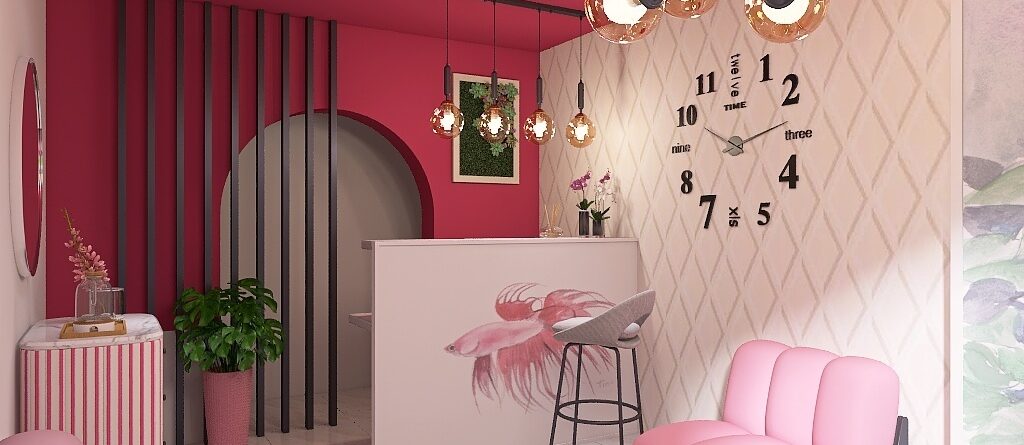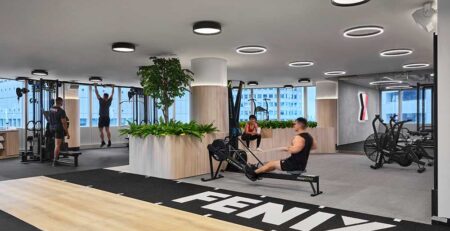Interior Designing Tips for Boutique Spa in Singapore

Singapore is a popular destination for relaxation and rejuvenation amongst tourists and locals enjoy their time off at Spa’s with equal zeal
There has been an upsurge of luxury spa’s in Singapore which reflects a growing demand for high end wellness experiences for both local and tourists in Singapore.
At Nidhi Jain Design Studio we completely understand how these end user experiences matter to our client and to create that experience we partner with our clients early on.
A spa is a facility that offers a variety of treatments, therapies, and activities designed to promote health, relaxation, and overall well-being. Spas typically provide services such as massages, facials, body treatments, manicures, pedicures, and hydrotherapy. They may also offer amenities such as saunas, steam rooms, whirlpools, hot tubs, and relaxation lounges.
Spas vary in size and scope, ranging from small day spas offering individual treatments to larger resort spas with extensive facilities and services. Some spas focus on specific wellness practices, such as Ayurveda, traditional Chinese medicine, or holistic healing, while others offer a more general range of treatments.
The primary goal of a spa is to provide a sanctuary where clients can relax, rejuvenate, and take care of their physical and mental health. Many spas emphasize a holistic approach to wellness, addressing the needs of the whole person—body, mind, and spirit. Visitors to spas often seek stress relief, pain management, skin care, detoxification, and relaxation, among other benefits.
Spas may be located within hotels, resorts, wellness centers, fitness facilities, or standalone establishments. They may cater to a diverse clientele, including individuals, couples, groups, and corporate events. Some spas also offer specialized programs, such as wellness retreats, detox programs, weight loss programs, or beauty packages.
Overall, spas provide a range of services and experiences aimed at enhancing health, relaxation, and vitality, making them popular destinations for individuals seeking to unwind and recharge from the stresses of everyday life.

Designing a spa involves creating a serene and relaxing environment that promotes wellness and rejuvenation.
Here are some steps to consider when designing a spa:
Define your concept and theme: Decide on the concept and theme of your spa. This could be based on elements such as nature, luxury, minimalism, or a specific cultural influence. Your concept will influence all aspects of the spa’s design, from the layout to the decor.
Consider the layout: Plan the layout of the spa to ensure a smooth flow of traffic and efficient use of space. Divide the space into different areas for treatments, relaxation, changing rooms, and reception. Ensure that each area is easily accessible and well-connected.
Choose calming colors and materials: Select calming colors and natural materials to create a soothing atmosphere. Soft, neutral colors like pale greens, blues, and earth tones can help promote relaxation. Natural materials such as wood, stone, and bamboo can add warmth and texture to the space.
Create separate zones: Designate separate zones within the spa for different activities and treatments. This could include areas for massages, facials, manicures/pedicures, saunas, steam rooms, and relaxation lounges. Each zone should be designed to cater to the specific needs of the treatment or activity it serves.
Incorporate natural elements: Bring the outdoors in by incorporating natural elements into the spa’s design. This could include indoor plants, water features, natural light, and views of nature. Natural elements help create a sense of tranquility and connection to the environment.
Focus on lighting: Pay close attention to lighting design to create the right ambiance in the spa. Use a combination of natural and artificial lighting to create a warm, inviting atmosphere. Consider dimmable lights, candles, and soft lighting fixtures to enhance relaxation.
Choose comfortable furnishings:Select comfortable and ergonomic furnishings for treatment rooms, relaxation areas, and lounges. Invest in quality massage tables, chairs, sofas, and loungers that provide comfort and support for clients.
Add sensory experiences: Incorporate sensory experiences into the spa design to engage all five senses. This could include soothing music, aromatherapy scents, textured surfaces, and temperature-controlled environments. Stimulating the senses can enhance the overall spa experience and promote relaxation.
Ensure privacy and tranquility: Design the spa to provide privacy and tranquility for clients. Use soundproofing materials to minimize noise from outside the spa and between treatment rooms. Consider using curtains, partitions, or screens to create private spaces within the spa.
Consider sustainability: Incorporate sustainable design principles into the spa’s design to minimize its environmental impact. Use energy-efficient lighting, water-saving fixtures, eco-friendly materials, and renewable energy sources where possible. A commitment to sustainability can enhance the spa’s appeal to environmentally-conscious clients.
By following these steps and paying attention to the details, you can design a spa that provides a tranquil and rejuvenating experience for your clients.
Best Interior Designing Service for Boutique Spa
If you are looking for an Architectural or Interior Design Services for Boutique spa in Singapore, you’ll want to consider a professional who specializes in Luxury Interior Design.
Let us walk together with you to understand you, your clients and your world.
At Nidhi Jain Design Studio we love to know more about you and how we can make your lives more fulfilling .
You could reach us at Nidhi Jain Design Studio call +65 98507375 or email at nidhi@nidhijain.sg



